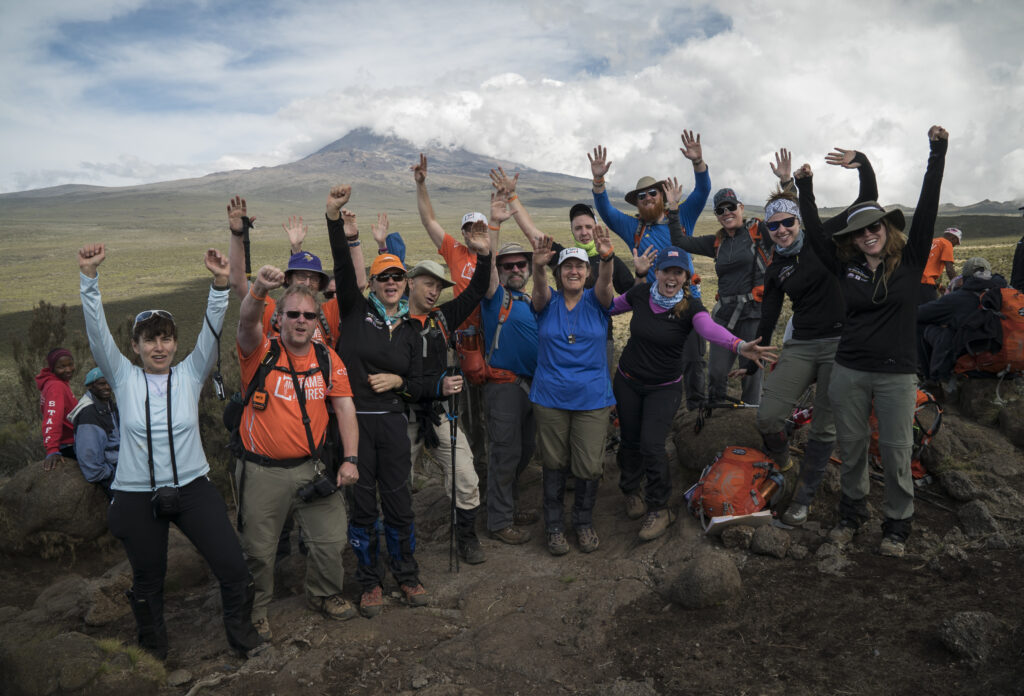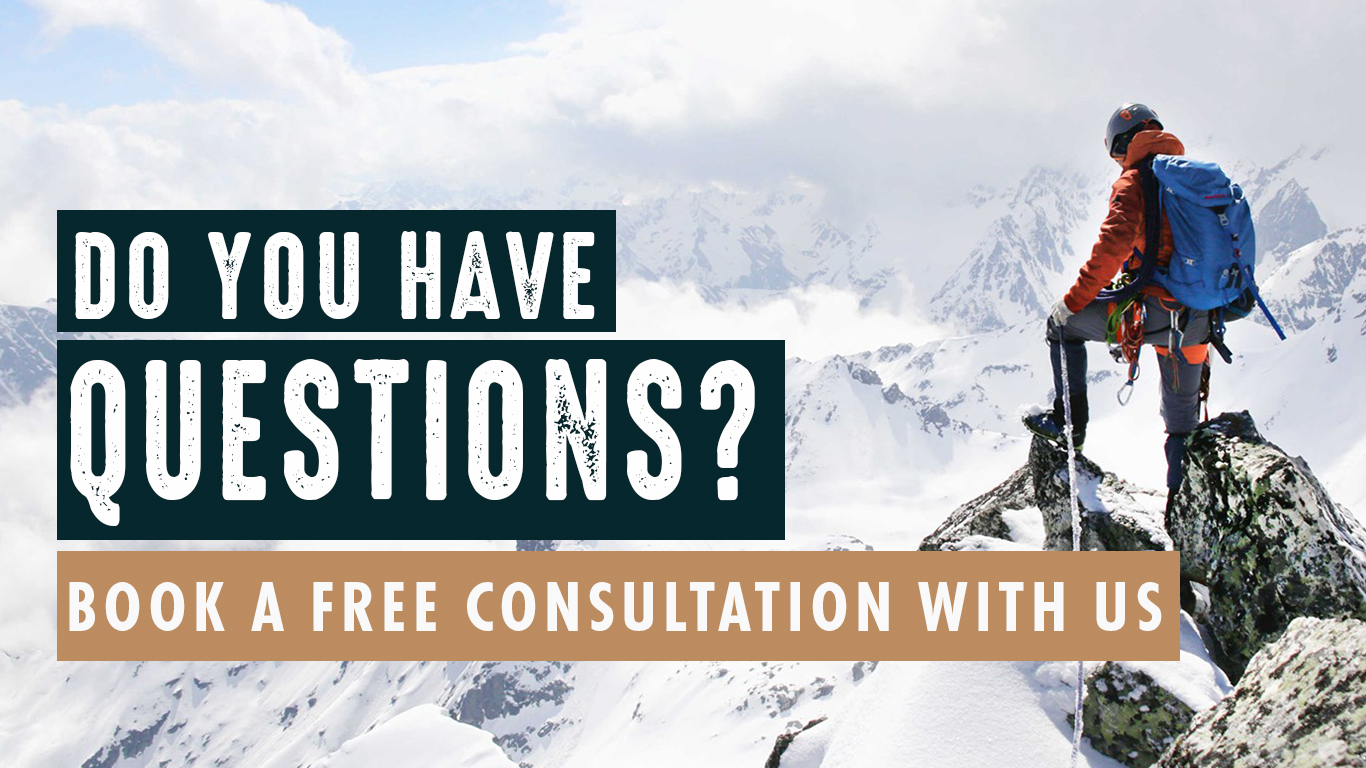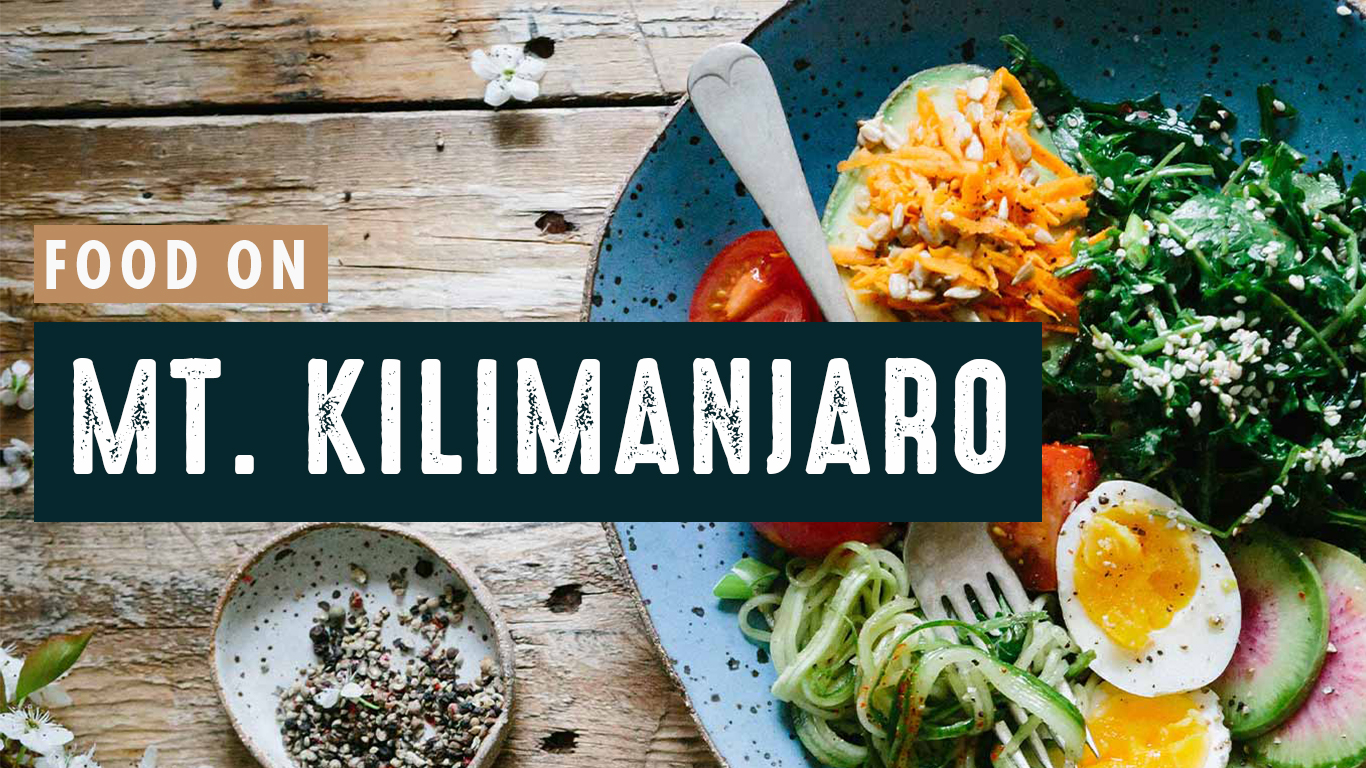
You’ve trained for months… And for even longer, you’ve dreamed of standing on the roof of Africa. It’s
time to think about what you’ll take along, but it can be hard to sort through what you truly NEED. Below
are my top 10 items that were either straight-up keys to my success in getting to the top of Kilimanjaro
or important comfort items that kept my head together and my motivation strong!
1.Boots – you will spend a lot of time on your feet, and your boots can either make or break the trek, so choose wisely! This is not the piece of gear to skimp on… The pain you’ll feel from a cheap pair of boots will linger MUCH longer than the pain of spending money on a quality pair! The best thing you can do for your feet is to visit an outdoors’ store where professionals will help you find the best boot for YOUR feet. Some stores even allow returns after a trial period of use. Speaking of use, get those boots broken in! Ideally, you would spend a lot of your training hikes wearing the boots you plan to take along so you can address any issues that pop up. I appreciated having water-resistant yet breathable boots for those rainy times.
2.Backpack – even though you’ll have porters carrying the bulk of your gear, you’ll want favorite
snacks and rain gear easily accessible during the day! Not to mention water – you’ll need to stay
hydrated while hiking. My 32 liter pack was the perfect size, even for summit night when I
needed extra warm layers. Again, just like with your boots, use your pack on training hikes so
you can figure out which pouches and pockets are the best spot for different pieces of gear and
snacks.
3.Trekking poles – Take a load off your knees – they will thank you! Not everyone uses trekking
poles, but I find them to be a lifesaver (and a kneesaver!) on multi-day hikes. They help me get
into a rhythm on the trail, and most importantly, some of the weight that normally ends up on
my knees is transferred to my arms and upper back. Trekking poles were especially helpful on
summit night, as we slowly progressed up the steepest sections of the trek. The only day I didn’t
use them on my Kili trek was on the scramble up the Barranco Wall, when I needed to use my
hands for balance. Otherwise, my trekking poles were worth their weight in gold! Be sure to get
the type that easily adjust for length – you’ll want shorter poles on uphill sections and longer
poles when going downhill. Learn more about trekking poles HERE.
4.Puffy coat – while I didn’t use my puffy coat daily, it was 100% critical that I had a really warm
coat with me for the colder times! I’m one of those people who gets cold really easily, even with
the proper layering that’s important at higher elevations, and my puffy coat kept me warm and
cozy, even on summit night when temperatures got close to 0 degrees Fahrenheit. But I barely
felt it with my layers, my coat, and that inner fire that gets stoked while working hard! Coats with
wider or larger baffles are generally warmer; there are fewer seams for cold air to seep through.
5.Fleece pants – I only wore shorts on one day, and otherwise I alternated between my two
favorite hiking pants. But at the end of a long day on the trail… Nothing felt better than slipping
into my fleece pants! They were perfectly warm, soft, and comfortable for lounging around
camp, and on colder nights, they kept me warm inside my tent and sleeping bag! And lastly on
summit night, these fleece pants were a key layer that kept me warm on that cold nighttime
hike.
6.Hats – On sunny days, you’ll need sun protection. At night and on chilly mornings, you’ll need a
warm hat. At very rare moments, you might want both! It’s amazing to watch the weather
change on Kilimanjaro. On most days, you’ll need a sun hat with a wide brim that protects your
face, ears, and neck from the strong, tropical sun. But when the sun dips behind the ridgeline
and sets for the evening, temperatures drop quickly and a knit or fleece hat will help trap that
escaping heat.
7.Gloves and mittens – at this point, I feel like I should just admit that I’m obsessed with staying
warm! Gloves serve several purposes. They can protect your hands from the sun and from
blisters if you’re using trekking poles. But of course the key function is keeping your hands
WARM on summit night! I actually had three types of hand protection with me: fingerless gloves
to protect from blisters while holding my poles, lightweight glove liners that I used on cool nights
in camp, and heavy-duty mittens that I wore on summit night on top of the glove liners. Despite
lousy circulation in my hands, they stayed warm!
8.Rain gear – the fastest way to get chilled to the bone and stay cold is to get wet. So rain gear is a
critically important item! There are different approaches to staying dry, but a pack cover, rain
pants, and a raincoat do the trick pretty well. Some people prefer a poncho, which subs for the
pack cover and rain coat, and also directs rain away from your legs. Regardless, rain gear is a
must-have for your day pack every day!
9.Camp shoes – similar to my fleece pants, it felt SO GOOD to sink my feet into my comfortable
camp shoes after a long day on the trail! I wore a favorite pair of sneakers or running shoes that
were super squishy. Others might slip into some recovery sandals or cozy slippers. Just make
sure whatever you choose has room for you to wear thick socks because your feet will get chilly
at higher elevations!
10.Ear buds – I love to revel in the beautiful silence and solitude of a deserted landscape. It’s also
great to chat up the people around me, and on my Kilimanjaro trek, there were plenty of
hilarious and enlightening conversations with my fellow trekkers and new friends. But at times,
the silence on a hike can be deafening or conversations can be overwhelming, especially on
challenging stretches, and I needed to escape inside my brain with an audiobook or music. To
this day, certain songs take me back to summit night and make me smile at the thought of that
challenging, long push up a steep ridge just before I topped out at Stella Point, when I was driven
forward by some motivating music. It’s also a good idea to have some good old fashioned wired
headphones just in case your ear buds die or get lost!
What’s not on the list:
You’ll notice a few items that might be on other gear lists but don’t appear on mine.
Hand and foot warmers – I actually tried using foot warmers on summit night, but they didn’t work
because of timing. I put foot warmers in my boots as I put them on, but by the time I REALLY needed
them, about 5 hours into the hike that night when temps were at their lowest, the foot warmers were no
longer warm! And I was NOT about to take my boots off to put in a new set. And so that’s how I found
out I didn’t need foot warmers on summit night because I survived just fine.
Leg gaiters: Sure, I got some dust and scree in my boots on the way down from the summit, but it didn’t
bother me enough to make me wish I had carried and then stopped to put on gaiters. I was glad to skip
gaiters and replace that open space in my pack with favorite treats!
For a great post-trek review of all the gear you will need to consider and also some tips on gear you likely won’t need to bring along, check out “Kilimanjaro Gear Review” by Rachel Mattix below.
*Video credit to Rachel Mattix.






